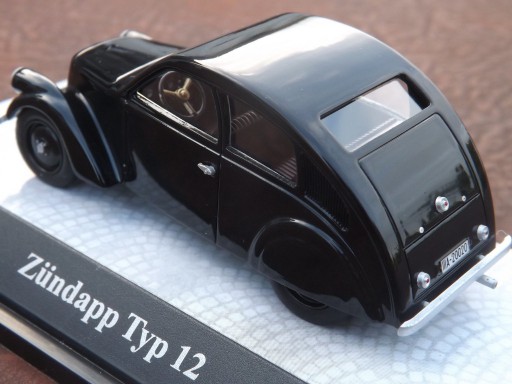Zündapp type 12
Long before WW2 the Porsche Ingenieursbureau developed the Porsche Type 12 for the Zündapp-Werke GmbH in Nuremberg in 1931. Several manufacturers wanted to design a "Kraft durch Freude" car; a car for the people as Hitler saw it. The car could not cost more than 900 Reichsmark. In 1932, Zündapp had three prototypes that offered room for four people. Designed by Erwin Komenda (an Austrian designer of the bodywork of the Volkswagen Beetle and various Porsche sports cars), she had a model with front-hinged doors. A self-supporting steel body was designed for the series. The chassis had the then standard pendle axles with transverse leaf springs. The Porsche "client" Neumeyer from Zündapp demanded the use of a water-cooled radial star engine. The four-stroke engine with five cylinders and central camshaft (as the first Porsche construction of this type) was mounted as an engine gearbox unit in the rear of the car. With a capacity of 19 kW and an empty weight of 600 kg, this prototype reached 80 km / h. The gearbox (three gears with overdrive) lay before the rear axle. Porsche was against the radial engine for this prototype, because this engine type did not offer uniformity for the other (WW2) vehicles.
During the tests it turned out that the engine cooling was insufficient and the transmission did not function satisfactorily, after which Zündapp owner Fritz Neumeyer decided not to continue this project. In addition to correcting the errors, the high investment costs for a series production must have been the reason to leave the project. Porsche received 80,000 Reichsmark and one of the vehicles for his work.
 Nederlands
Nederlands
 Deutsch - Deutschland
Deutsch - Deutschland
 Deutsch - Österreich
Deutsch - Österreich
 Deutsch - Schweiz
Deutsch - Schweiz
 English
English

